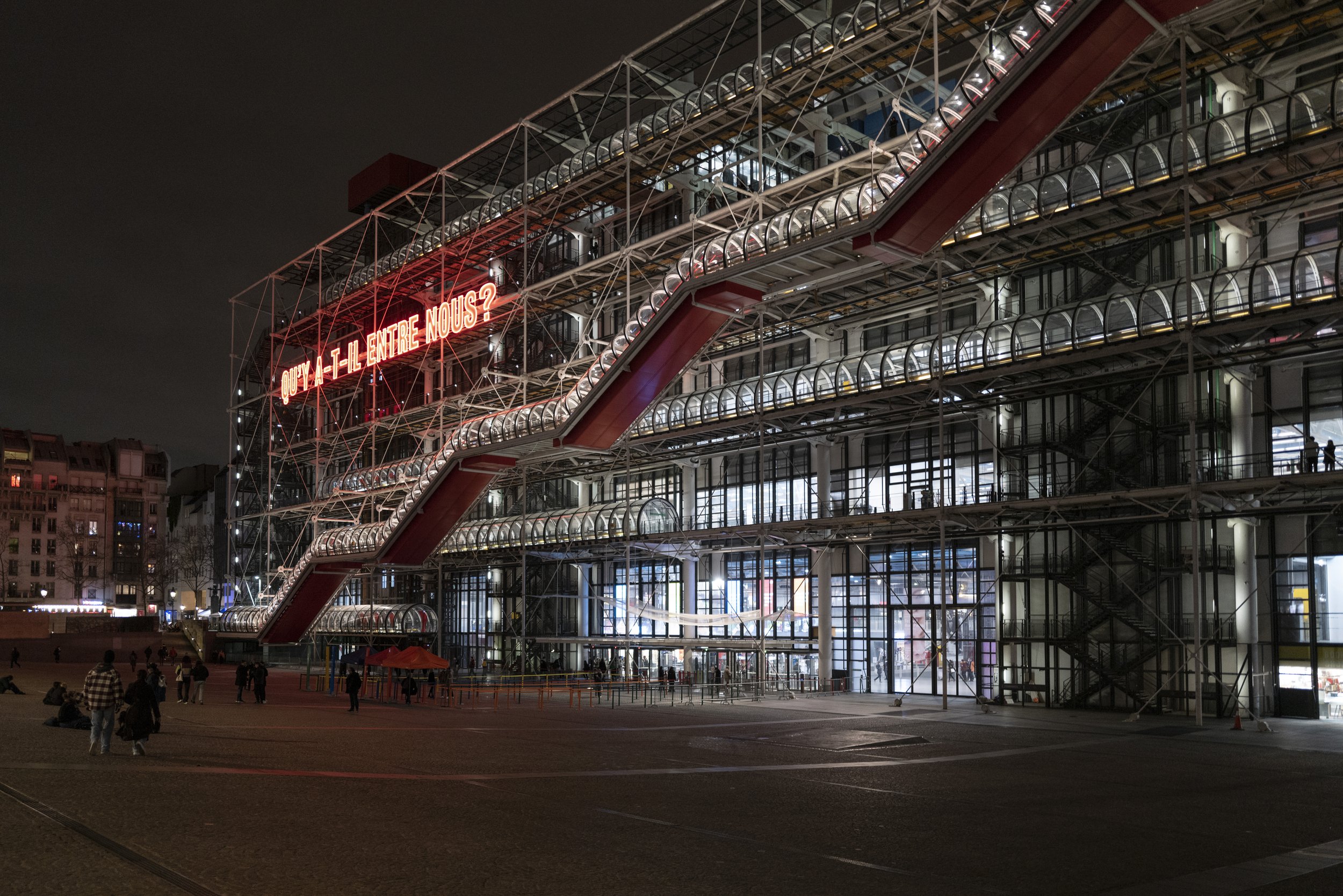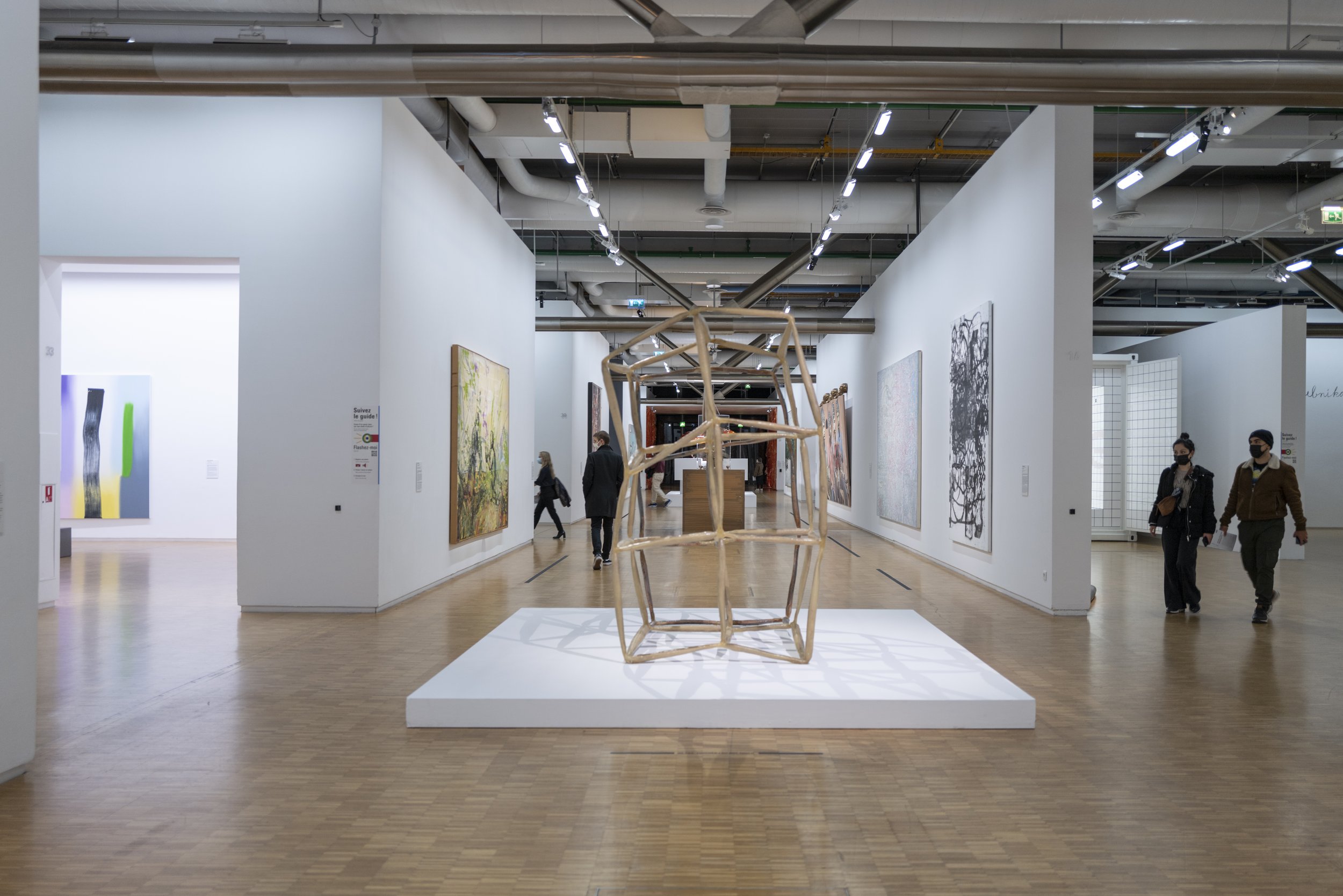
Centre Pompidou






The Pompidou Center in Paris is one of the world's best-known museums. It contains many iconic works of art, including Vincent van Gogh's Saint-Paul and Pablo Picasso's The Old Guitarist. It also houses the Museum of Modern Art of the City of Paris, opened in 1976 and closed in 2013. The Centre Pompidou is a sprawling building with over 1.5 million square feet in size.
With more than 13,000 works, the National Museum of Modern Art's architectural collection is today one of the largest in the world.
Created in 1992 at the initiative of Dominique Bozo, President of the Centre Pompidou, it contributes, through exhibitions and publications, to show the fundamental multidisciplinary dimension of modernity. The coherence of the collection is based on the notion of the architectural project, developed from its conception to its realization through all its forms, models, drawings, prototypes, and architects' writings. The documentary collections housed in the Kandinsky Library complement this understanding.
The chronological framework (1915 to the present day) aims to bring together a variety of movements and individualities by placing them in a historical context. The thematic groups enable us to address the issues of modernism and radical architecture...
Open to the technical issues and technological innovations that marked the 20th and 21st centuries and attentive to the utopias of a mutating world, the collection also highlights the many bridges between art and architecture.
At the time of its creation, the Architecture Department endeavored to build up a collection that would provide an initial overview of modern and contemporary history: French modernism (Pierre Chareau, Eileen Gray, etc.), the Russian avant-garde (Ivan Leonidov, Yakov Chernikhov), and Italian rationalism (Adalberto Liberia). Outstanding projects such as those of Jean Prouvé have been completed it.
Over the years, many works done by prestigious architects have been added to the collection, beginning with those of Renzo Piano and Richard Rogers, the designers of the Centre Pompidou. Major works were acquired, such as the modular collage (1950) by Le Corbusier. Links are developed by the design sector, as several architects are furniture designers.
By crossing missing periods and geographical areas, taking into account research trends, the collection now asserts its international routes. Italy, South America, and Japan are poles of excellence. Research on Indian architecture enables us to better understand the interrelations with the European scene.
Our building
The Centre Pompidou, conceived by architects Renzo Piano and Richard Rogers, has been at the heart of Paris since 1977. It is a structure of glass and metal bathed in light, reminding a heart irrigated by monumental arteries of bright and primary colors.
The color structuring
The very strong presence of color, in the design, is one of the hallmarks of the architecture of the Centre Pompidou.
Four strong colors - blue, red, yellow, and green - enliven its facades and adorn its structure, following a "code" defined by the architects:
Blue for air circulation (air conditioning)
Yellow for the electrical circulation
Green for water circulation
Red for the circulation of people (escalators and elevators)
The building in the figures
The building covers ten levels of 7,500 m2
12,210 m2 dedicated to the presentation of the artwork collection of the Musée national d'art moderne
5,900 m2 dedicated to temporary exhibitions
2 movie theaters (315 and 144 seats)
A theater (384 seats) and a conference room (158 seats)
An associated public reading library, the Bibliothèque Publique d'information, of 10,400 m2 with a capacity of 2,200 readers
A documentation and research center for the museum and open to researchers, the Kandinsky Library, covers an area of 2,600 m2
An iconic building.
While its designers, the two architects Renzo Piano and Richard Rogers, conceived the Centre Pompidou building as a veritable living organism, it is also built in one of the oldest districts of the capital, the Beaubourg plateau, the beating heart of Paris since the Middle Ages.
The vast Piazza - which is based on the elements of the Roman piazza - is an integral part of the Centre Pompidou and, above all provides a strong link between the city and the building, allowing the most natural passage possible between the two spaces. In the beginning, the Forum was to be opened in the Piazza as a station hall. Impossible to realize, this spirit of open space has nevertheless been preserved, and the Forum has been given a transparent glass facade. In this dense area of Paris, this large rectangular square acts like a lung, a living space where Parisians, tourists and onlookers mingle. People meet there, stroll, sit and watch.
From the outside, the building's visual signature is provided by the huge staircase, the "caterpillar", conceived as an outdoor vertical street. It is the main thoroughfare of the Pompidou Centre, serving all levels and transporting the public upwards. Its transparency makes it possible to admire one of the most beautiful views of Paris by going up and prolonging the feeling of loitering a little longer in the city.
A flexible design
Inside and on six levels, the building has over 7000 m2 of floor space, each of which can be adapted if necessary. Their design is such that they can be freely arranged according to needs and thus meet the requirements related to the activities and the different projects. The building thus presents a radical vision in which spaces are not defined by their function.
The Forum, a huge volume of ten metres in height, is the first point of contact with creation. It is conceived as a multi-purpose square, the central core from which one can orient oneself towards all the sections of the Centre Pompidou and circulate freely on three levels (-1, 0, 1).
In order to confer flexibility of use and flexibility to the volumes, all the systems (ventilation, electricity, water), as well as the circulations (elevators, elevators, escalators), are rejected to the outside and are identified by a color code. Nothing is concealed, all the vowels are visible from the outside. As far as the frame is concerned, it is conceived as a giant building ensemble. The elements are repeated, assembled, and engaged, forming a regular metal gear, painted white and fully open.
If, in the beginning, it was nicknamed by its detractors "Notre-Dame-des-Tuyaux", the Centre Pompidou is now one of the most photographed monuments of the capital, imposing its lightness and elegance in the Parisian landscape that it dominates with its fifty meters height.
This is what its logo translates. Five horizontal black stripes alternated with white stripes evoking the different platforms, all crossed by two black zigzag stripes representing the caterpillar. This is the most sincere purification of the facade and its particularities.
Designed by the designer Jean Widmer and updated in 2019, it reminds us how, more than forty years after its creation, this building remains inseparable from Paris.
“On the Piazza and outside the usable volume, all the facilities of the public movement have been gathered. On the opposite side, all the technical equipment and piping were centrifuged. Thus each floor is totally free and usable for any form of cultural activity known or to be found.”
Renzo Piano, architect of the Centre Pompidou
Renovations
The triumphant attendance since its opening in 1977 has led the Centre Pompidou, in line with social and cultural improvements, to readapt its structure and resources to best perpetuate its activity.
On October 1, 1997, the Centre Pompidou embarked on a major redevelopment project. Intended to enlarge, restore and redistribute the spaces, and to improve the comfort of reception and access for the public, these renovations are part of a desire to reaffirm the values and challenges invoked at the time of its creation.
At the end of this work and upon its reopening on January 1, 2000, the Centre Pompidou unveiled its metamorphosis to the public.
The presentation of the collection of the Museum of Modern Art now extends entirely over levels 4 and 5. The 6th level hosts three spaces dedicated to temporary exhibitions. The Forum has been redesigned to make it easier and more intuitive to use. On the first basement level, a center dedicated to living performances, debates and audiovisuals has been created.
These renovations also concern the exterior of the building, including the façade, as well as the creation of a rue du Renard access reserved for the Bpi while maintaining an exit to the Forum, thus perpetuating the link with the Center's other activities.
Centre Pompidou Video
◯ introduction|説明 This is the video about Pompidou Centre in Paris created by Giorgio + KOHARU.
We would like to share our sight and knowledge to you as an architect and creative entrepreneur.
フランスにある、ポンプドゥー・センターについてのビデオです。 建築家+起業家の視点から情報をお届けできたらと思います。
◯architects|建築家 Richard Rogers + Renzo Piano リチャード・ロジャース+レンゾ・ピアノ
◯ Website|ウェブサイト English: https://tabi-to-kenchiku-to.com/
日本語: https://tabi-to-kenchiku-to.com/?lang=ja
◯Giorgio's website|Giorgioのウェブサイト https://www.giorgioprofili.com/centre...
◯ Blog | ブログ English: https://medium.com/@ak13022/villa-sav...
日本語: https://note.com/archi_koharu/n/n606c...
◯ Instagram|インスタグラム Giorgio: https://www.instagram.com/giorgiowine/ KOHARU: https://www.instagram.com/archi_koharu/
◯Music|音楽 Bleu Toucan - Hanoï Café Soundcloud: http://bit.ly/1QoCxFC
◯information of Centre Pompidou|ポンピドゥー・センターの情報
English: https://www.centrepompidou.fr/en/
日本語: https://www.centrepompidou.fr/en/%E6%...
Thank you for watching. ご視聴いただきありがとうございました。
Centre Pompidou - Paris
Place Georges-Pompidou
75004 Paris